
American Toads are a crucial member of the Eastern United States and Canada’s ecosystems. However, like many animals, American Toads are threatened by increasing human activity and climate change. As a young girl, I noticed the toad calls of early spring began to slowly fade. It inspired me to build a small oasis for American Toads to safely live and reproduce, and in 2021 it become a year long study. Join us on the journey of these amazing creatures of life cycles. And I hope this gives you an inside look to a small but crucial creature in our ecosystems right outside your back door!
THE BEGINNING
A small American Toad crossing a park path is the reason I joined the herptile community. When I was 5 years old walking in a local park of my hometown, a small jumping creature caught my eye. From then on, my love and passion blossomed for these extraordinary beings.
American Toads gave me my passion and I believe I must do everything to persevere their homes. In 2012, I created a “frog garden” in my backyard. Over a few years, this area grew into a beautiful sanctuary for native amphibians. It began with only one pond and today has three ponds, one being a nursery pool for rescued eggs.
The Frog Garden has played a crucial role in the reintroduction of American Toad populations in my home town. Before I created the garden, I noticed the early summer calls of toads beginning to fade until there was nothing in 2011. This coincided with the destruction and removal of vegetated plots of land in my area being turned into housing developments. American Toads return to where they were born to mate and many returned to concrete.

LAYING THE FOUNDATION
The Frog Garden was built on a fertile plot of land that was once a vegetable garden. The garden consisted of one stagnate pond with lots of leafy ground coverage. However making the garden is the easy part, attracting the American Toads can be difficult. A key way to get toads that still live in the area to find the garden on their own is to add running water. This sparked the idea to create another pond, from the original first pond, and then connect the two by a river. The top pond uses gravity to drain into the second lower pond and a pump brings the water back to the top. This creates clean water and a steady flow of trickling water.
The river helped immensely but seemed to only attract males. I then set out on another mission to find misplaced females. By checking street sewer drains, local pool filters, and other areas where toads could become trapped by human activity, I successfully re-homed around 10 females, found within a 4 mile radius.
For more information and progression photos, click the button below to view the Frog Garden’s Page.
2015- THE FIRST
In 2015, the Frog Garden experienced its first batch of baby American Toads. A group of American Toads hatching here established the first natural group whom would return to the ponds each year to mate. These toads will never experience what it is like to have their habitat removed and have created the foundation for a new population.
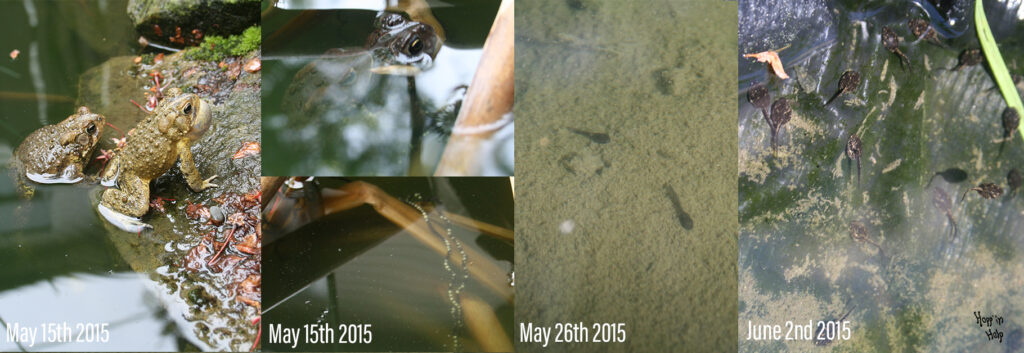
2016- DOUBLING UP
In 2016, Hopp’in Help welcomed two groups of toadlets to the family. You may notice that there is a reoccurring couple and a male toad who was unable to find a mate in 2015. Both the bright yellow male toad (Sunshine) and brown toad with teardrop markings (Hazel) found mates this year. 2015’s hatchlings are not sexually mature yet but did arise in the spring in the Frog Garden.
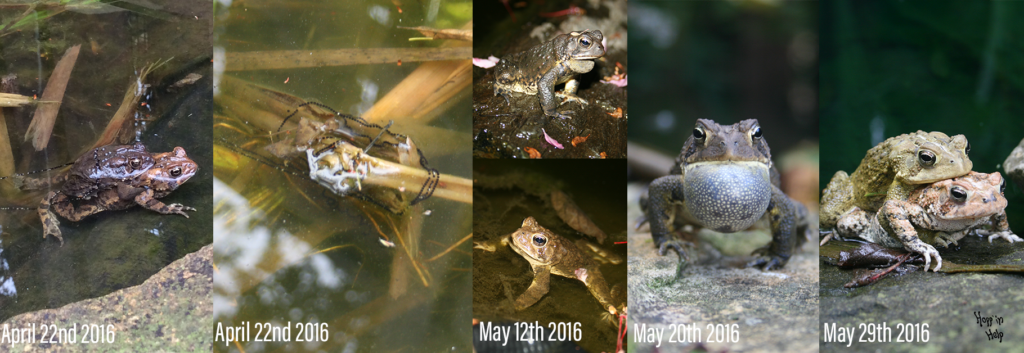
2017- 1 BUNCH, 2 BUNCH, 3 BUNCH!
2017 was a truly amazing year for the frog garden. The combination of perfect weather year-round and the first bunch from 2015 were beginning to become sexually mature. Something that was crucial to this good year is the weather allowed for the toads to rise from hibernation in March. Meaning they had the entire wet season April-early July to call for mates.

The first bunch was laid on the evening of April 10th to the 11th. The male being the first frog garden born toad to reproduce. While this is an amazing milestone, the Alpha male Hazel was not too happy about this. Hazel is the Alpha because he produces the loudest call and calls throughout the entire raining season. He returns each year and “wrestles” each couple in competition for the female. Hazel stayed nearby the pair the entire time they laid eggs, occasionally trying to remove the male from the female’s back.
The eggs themselves had perfect conditions to grow into toadlets. Occasional cold nights and snow are common in Ohio and the eggs can handle it to an extent. Thankfully the ponds never froze because of ideal conditions and all of the tadpoles survived. You will notice though that it took much longer for the eggs to hatch in colder conditions.
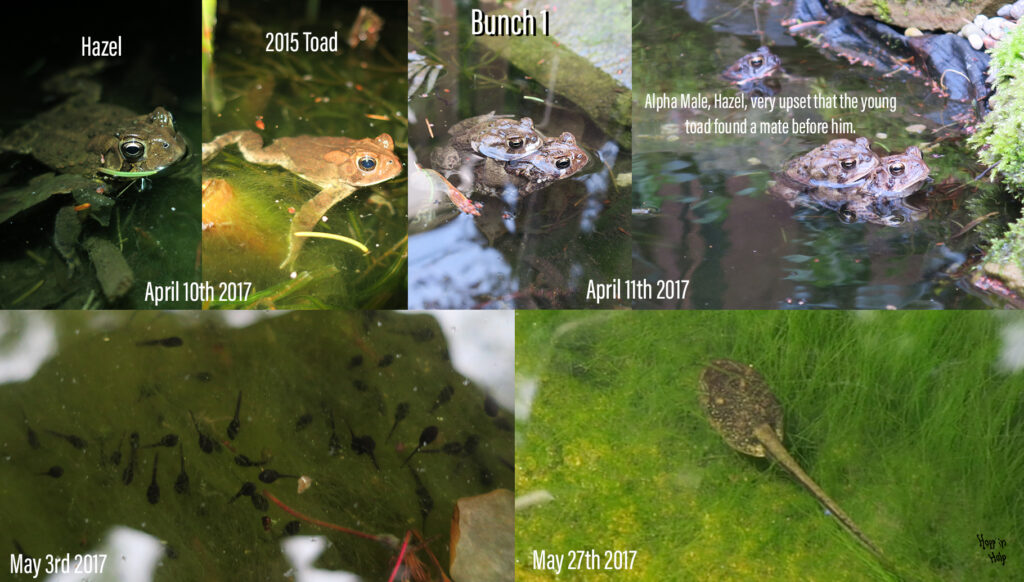
The next batch of eggs was laid after the cold spurts and grew much faster. Both the first batch and second were laid in the top pond so it is difficult to distinguish the two groups.

The third batch of eggs arrived late into the raining season on July 1st, long after the first two batches made it to land. This was by far the largest bunch of eggs ever laid! Thus leading to the largest group of toadlets. I placed around 20 tadpoles in an enclosure to further examine how they grow. Once they had fully grown and functioning legs, they were released back into the garden.
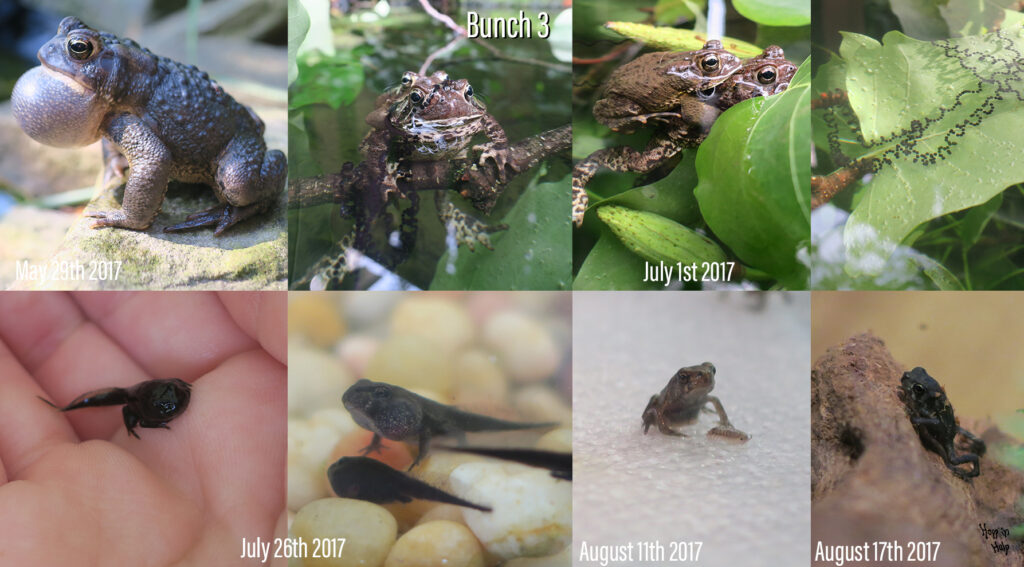
2018- TWO AND DONE
In 2018, the toads decided all it once was the plan! Hazel and a new young male toad found mates. Hazel’s mate (3rd photo) is the same female from 2015. Both couples laid on the same night leading to an explosion of tadpoles in May!
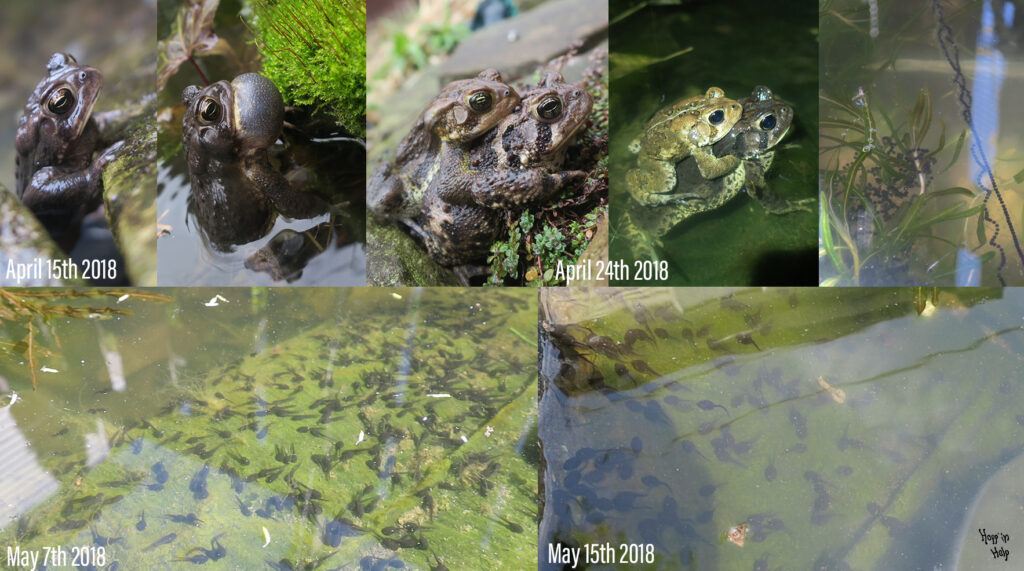
2019-THE LOSS
The weather patterns of spring 2019 brought devastating losses to the Frog Garden. The toads returned at the beginning of April and laid a clutch mid April. Multiple cold spurts killed the young eggs and caused the toads to not attempt again.

2020-RESCUE & SUPRISE
The year 2020 has certainly been full of surprises and loss. Unfortunately, two batches of eggs were lost to the cold. I had lost hope in the toads trying again because of how they acted in 2019. I was correct that my toads would not try again, but I received an interesting phone call from a friend. On a walk with her dog, she noticed a small vernal pool full of 40 some American Toads calling for mates. Rainwater collected in the football field of our old elementary school and the toads were at great risk of the water drying up and or humans cutting the grass. That night we set out and collected several bunches of eggs. We let the toads be because they disbursed after mating.
I was doubtful that eggs would survive because of how cold the nights were getting still so late in the season. I purchased and placed a large outdoor pond heater in our nursery pond. By the end of June, I had lost hope that there were any tadpoles. But to my surprise, on July 2nd, I discovered a hundred small toads leaving the pond. It was certainly a 2020 miracle!

2021- IN PROGRESS
In 2021, I took the opportunity of my last full year in my hometown before moving to Central Florida for college to take a in depth look into the lives of these creatures. Data spanning all of 2021 was collected and is currently being processed! Stay tuned for more!
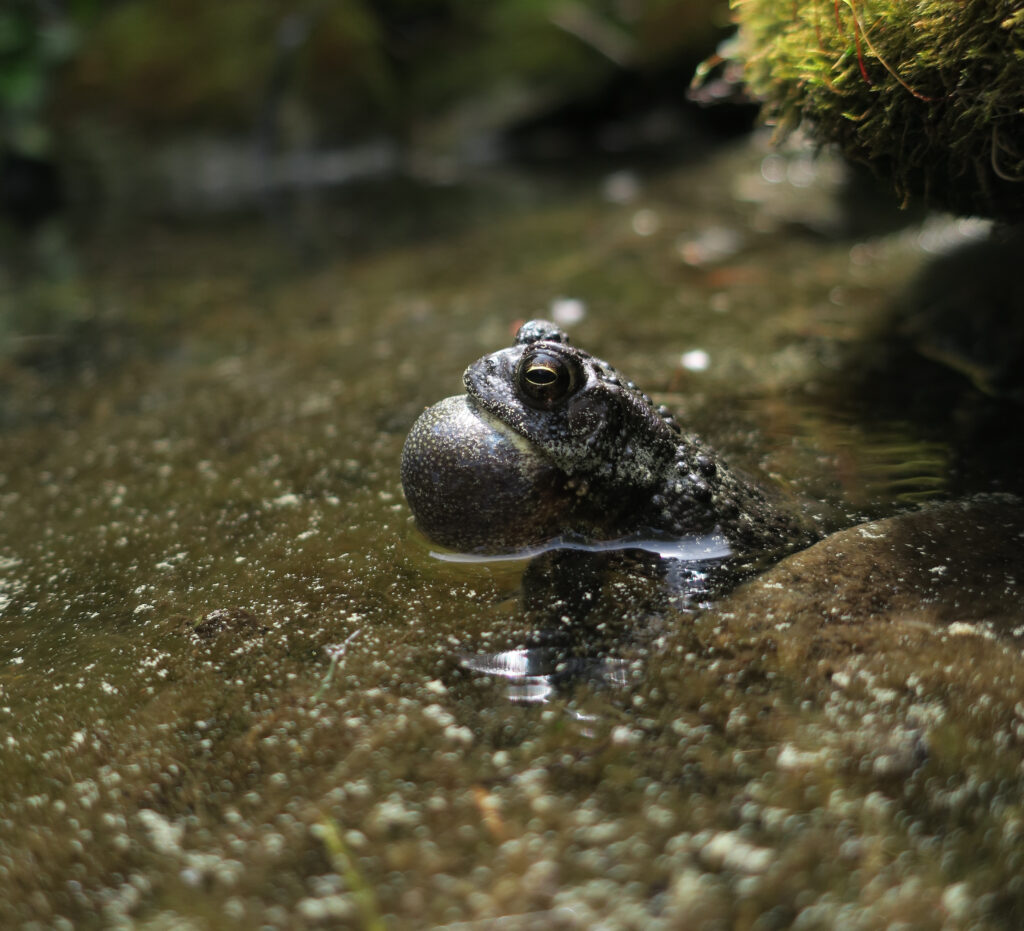
WHAT I’VE LEARNED
In this small study, I can conclude that climate change affecting the jet stream disturbs normal weather patterns, leading to a devastating change in local American Toad populations. In 2015, the first reported toad emerging from hibernation was in May, and the eggs were laid later that month. In 2016, toads returned in early may and laid eggs shortly after. In 2017, toads resurfaced in March and laid twice in April and once in July. In 2018, Toads returned and laid two clusters in April. In 2019, the same occurred but the cold killed the eggs and possibly many toads that resurfaced in a warm spurt. In 2020, toads resurfaced in April, laid in April, and faced the same fate.
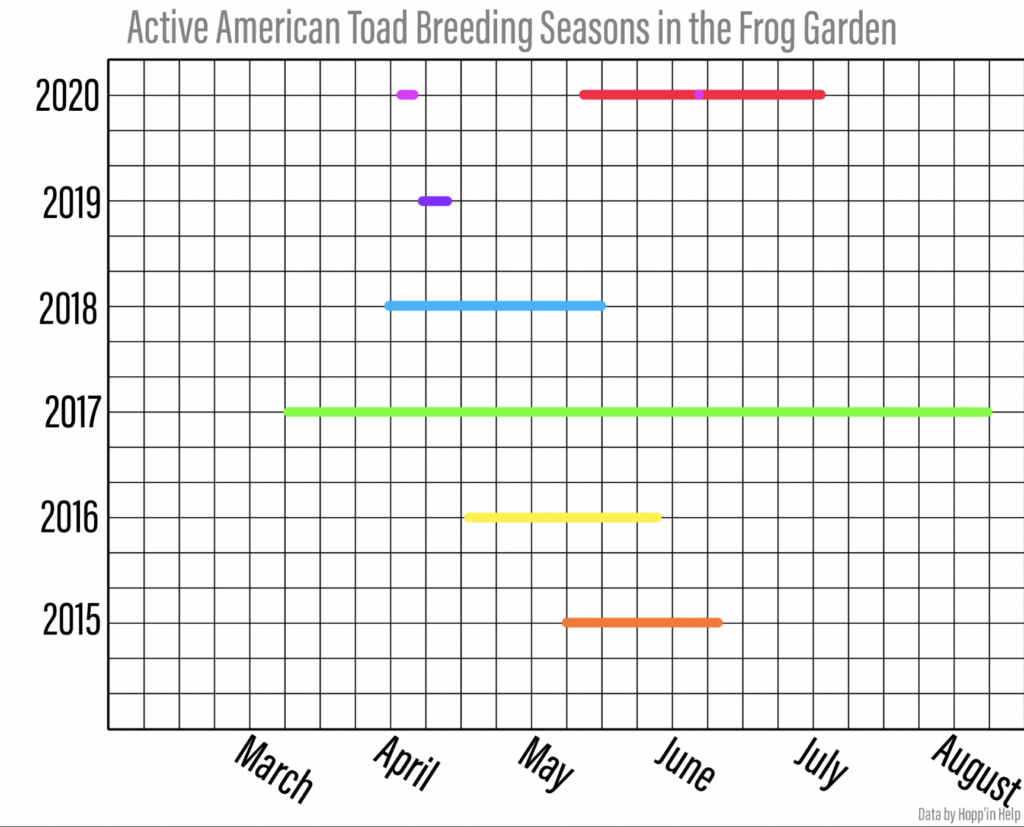
A wavier jet stream means more unusual weather patterns. This including spurts of warmth rather than a gradual ascension. These cold and warm fronts also bring odd precipitation patterns. Heavily affecting toads outside of the garden who rely on pooled snowmelt and rain to mate.
The planet needs our help. From Blue Whales in the ocean to the small hopping toads of North America. We have created these issues and we have a short window to help reverse them. But you can help! Start your own project helping wildlife in your area. Remember even helping fungi grow is helping the ecosystem! Teach others to love, protect, and cherish our planet. Small drops of good lead to big waves of change!
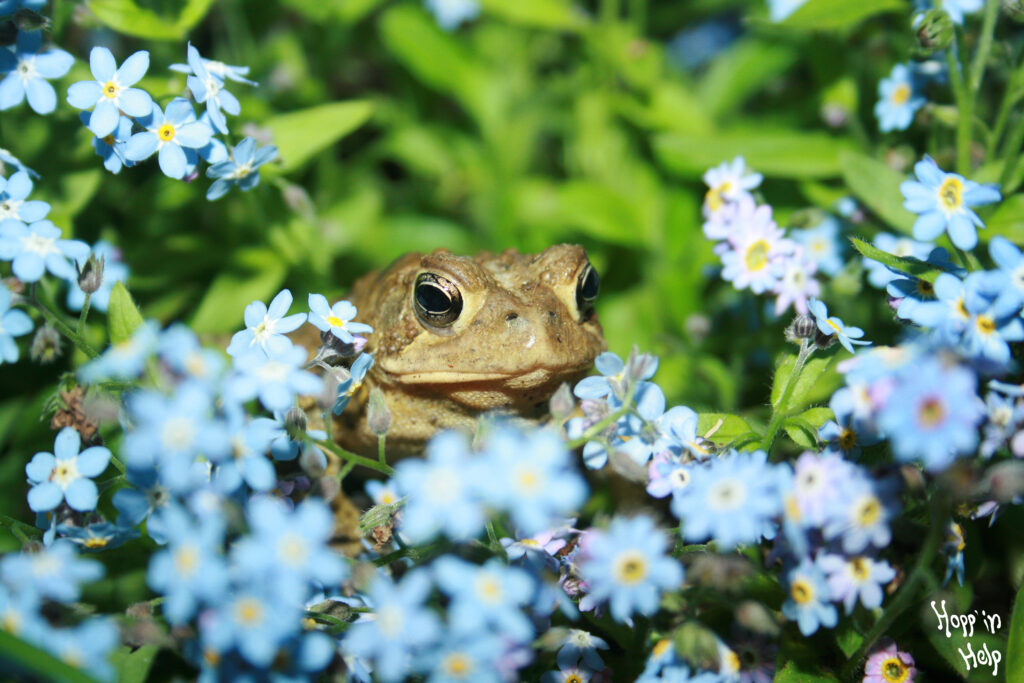
By Madison Brass
Sources:
Hook, Leslie, and Chris Campbell. “Climate Change: How the Jet Stream Is Changing Your Weather .” Financial Times, 6 Aug. 2019, www.ft.com/content/591395fe-b761-11e9-96bd-8e884d3ea203.
“Jet Stream Not Getting ‘Wavier’ despite Arctic Warming.” ScienceDaily, ScienceDaily, 19 Feb. 2020, www.sciencedaily.com/releases/2020/02/200219152855.htm.
Nunez, Christina. “The Jet Stream, Explained.” Environment, 8 Mar. 2019, www.nationalgeographic.com/environment/weather/reference/jet-stream/.
